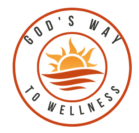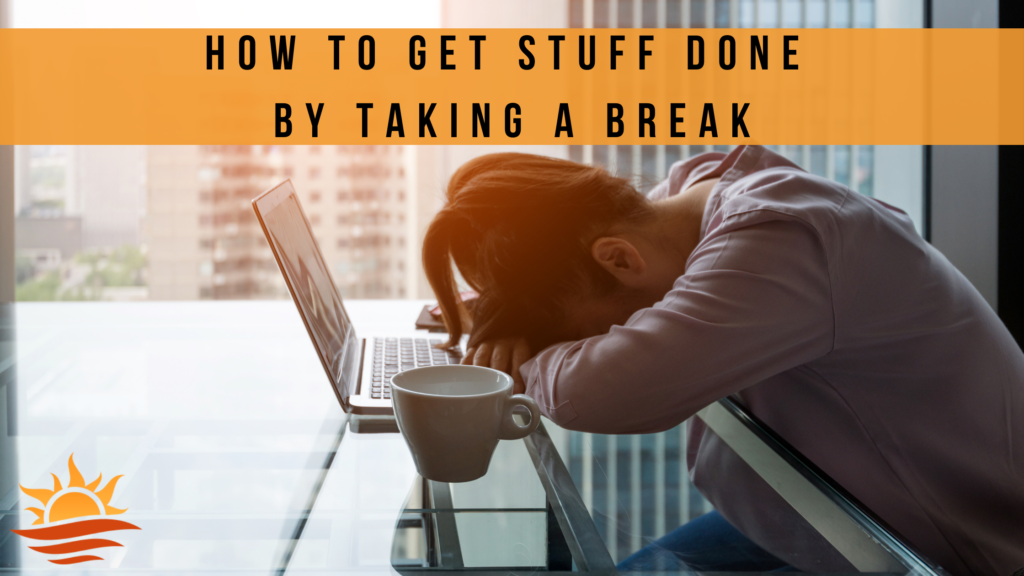I sit at the computer for hours. My eyes burn, my neck and shoulders tighten, and brain fog and fatigue settle in. For many years, this was my job. Or perhaps your job keeps you on your feet all day and you would give anything to sit down and rest. Neither situation supports wellness.
Do you wonder why the coffee break is part of the workday, even if you don’t drink coffee? You get more stuff done by taking a break.
Find out how ultradian rhythm breaks improve energy, productivity, creativity, wellness, and resilience.
What are ultradian rhythms?
Ultradian rhythms are physiologic patterns of the body occurring many times per day. Several of these patterns manage cycles of energy production.
Do you periodically feel sluggish, distracted, lose focus, and crave sugar, carbs, or a cigarette (if you smoke, which I hope you don’t)? Other symptoms are yawning, fidgeting, hunger and thirst. These symptoms mean the body craves downtime.
About every 90 minutes our energy dips and stress increases because by-products of mental and physical activity build up. The body needs a break to detoxify, recover, and repair. The brain needs downtime to reorganize information and create synaptic connections to merge all the information it gains.
What is an ultradian rhythm break?
To begin, set a timer and check in with yourself about every 20-30 minutes to keep track of how you feel. Notice your symptoms when you lose focus, experience brain fog and fatigue. Then it’s time for an ultradian rhythm break.
Next, find out what interval and activity for the break works for you. A 20-minute recovery break every 90 minutes, or even 5-10 minutes, recharges the brain and body for most people.
In particular, remember to assume a contrasting position. If you are sitting, then stand or walk. If you are standing and walking, then sit.
Suggested activities include: take a bathroom break, drink some water, have a healthy snack, walk around outside, converse with a co-worker, sit and let your mind wander or do some mindless tasks not involving technology. (That means no phone!) Ideally, a quick nap is also beneficial, but not practical in most situations.
The break recharges you to your previous level of energy, productivity and creativity. You are ready to continue your workday. View a diagram of the process here.
What happens if we ignore our ultradian rhythm break?
Perhaps your normal day at work or home is non-stop activity without taking a break. It’s tough to go against the norm, or change the habit of being constantly engaged. Our culture approves doing more and more without stopping, even though productivity would improve with ultradian breaks.
So, if you skip the break and push through, you may recover to a higher level of performance than at the dip, but not as high as before. Our error rate increases, and productivity plummets by mid-afternoon with no breaks.
Over time, negative effects on our health occur, such as increased chronic inflammation, increased blood pressure, imbalanced blood sugar, lowered immunity, increased sugar and carb cravings, and increased moodiness.
In addition, long-term negative effects of not taking breaks include headaches, back and neck pain, memory loss, and increased risks of heart disease, type 2 diabetes, arthritis, depression and more.
Conclusion
In her book, Pilar Gerasimo wrote, “The more you understand and respect your own ultradian rhythms, the more capable you’ll be of getting the best from your body and mind.” 1
However, I know how contrary taking a break every 90 minutes seems. Coworkers or family might consider you weird or abnormal at your workplace or home. Be brave! Take an ultradian rhythm break and see if you get more stuff done. Let me know in the comments how it went!
Disclaimer
Any information on this Website is provided for educational purposes only and is not intended as a substitute for the advice provided by a healthcare professional. You should not use the information on this Website for diagnosing or treating a health problem or disease or prescribing any medication or other treatment. You should always speak with a healthcare professional before taking any medication or nutritional, herbal or homeopathic supplement, or adopting any treatment for a health problem. If you have or suspect that you have a medical problem, promptly contact a healthcare professional.
References
Gerasimo, Pilar. The Healthy Deviant: A Rule Breaker’s Guide to Being Healthy in an Unhealthy World. North Atlantic Books, 2020, p. 183.



